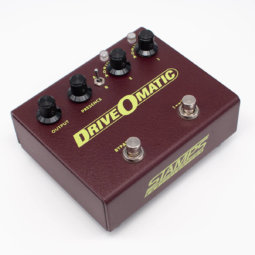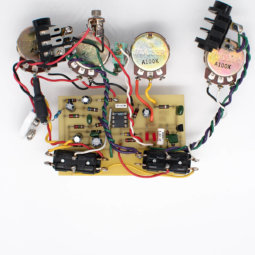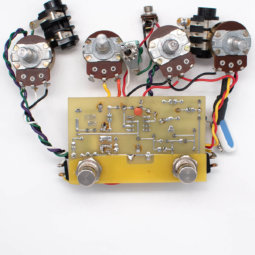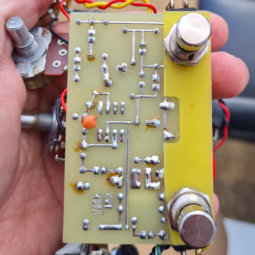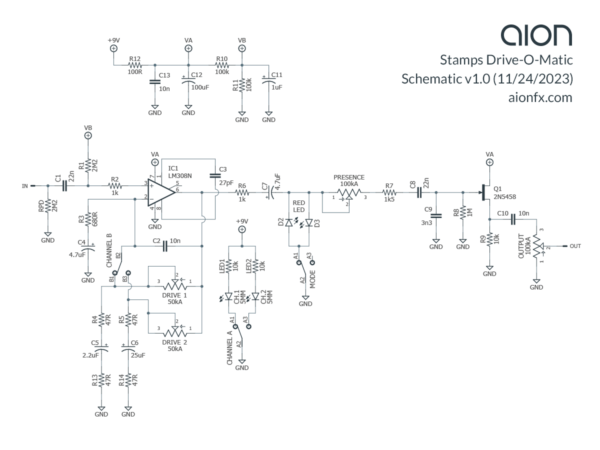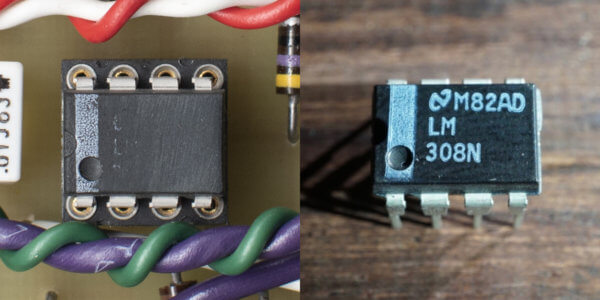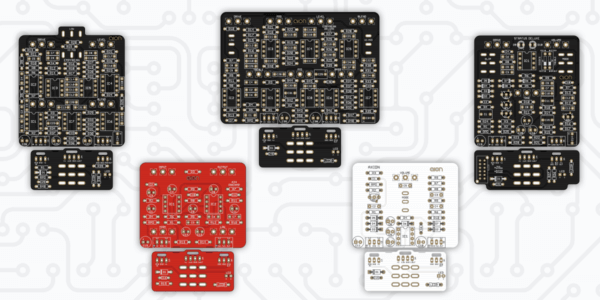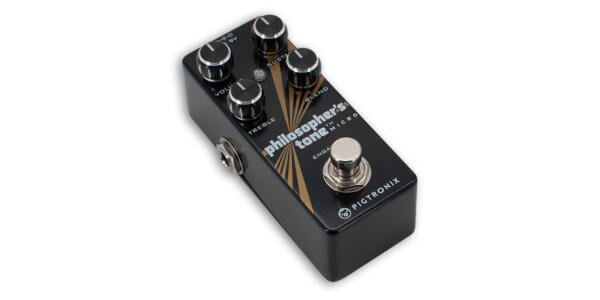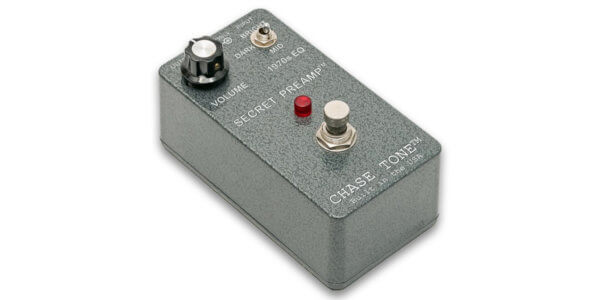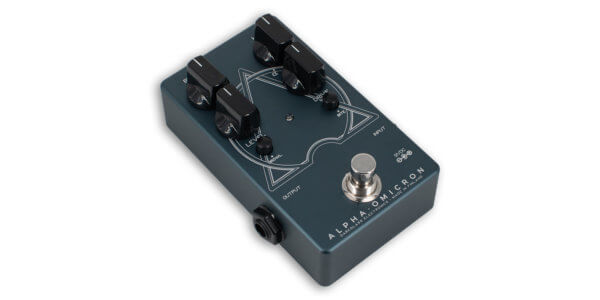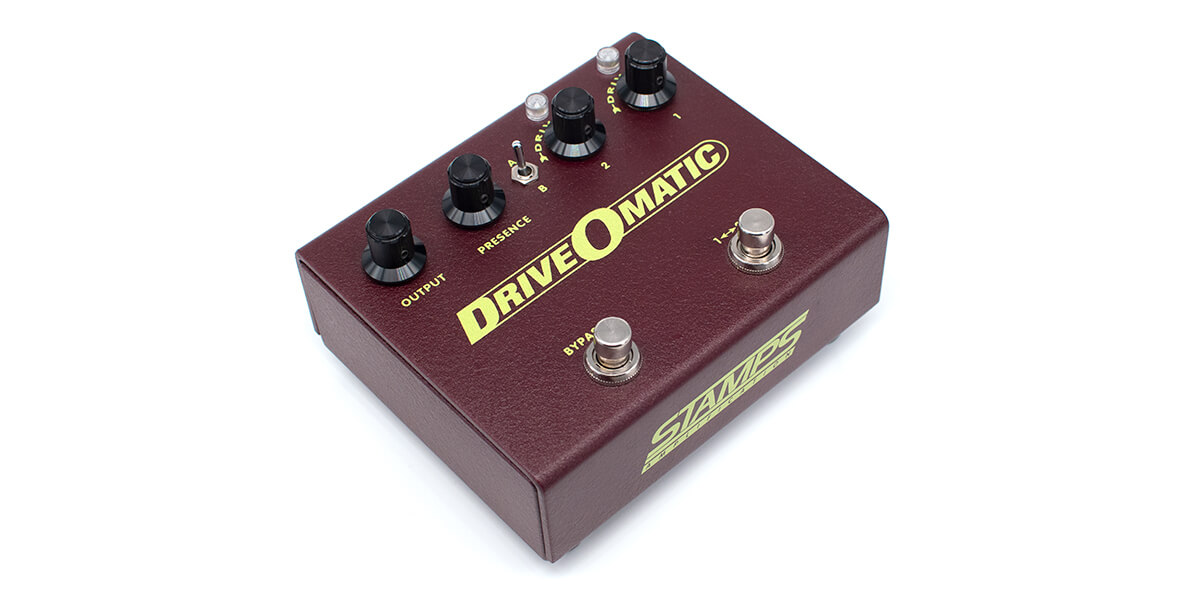
Tracing Journal: Stamps Drive-O-Matic
Next on the bench is the Stamps Drive-O-Matic. Built by Robert Stamps of The Amp Shop in LA in the mid-1990s, it was a very early example of a boutique pedal, all hand-built in small quantities. Despite this, coming from the center of a major music hub, some ended up in the hands of A-list musicians, and it became a favorite of both Bonnie Raitt and Rick Vito[1] in particular.
The Drive-O-Matic was featured in a Rhett Shull video with JHS in 2021: (the beginning through around 4:00)
When we came across one for a good price, we decided to tear into it to see what was going on.
Tracing photos
This was one of the most challenging disassemblies we’ve done. There’s always a balance to be had between serviceability and reliability, but in this case the footswitch nuts are epoxied in place and the nuts can’t be removed from the shaft without fully destroying them. Since the maker of this pedal was an amp tech, this was probably just a reliability measure, rather than an attempt to obscure it from prying eyes.
Schematic
The IC was sanded down pretty well, but just enough of it was visible that we were able to compare it to a photo of a new-production National LM308N from the mid-1990s. As you can see, it’s an exact match:
Part of National logo can be seen on the top line, followed by “L” and part of an “M” on the second line, and the top part of a “3” on the third line.
Analysis
Two-channel pedals are pretty common today, even trendy, but we’re not sure we’ve seen any that predate this one. It’s probably not the very first example, but it’s certainly one of them. In this case, it’s not two independent circuits inside like the King of Tone, but instead just switching out an alternate gain pot, similar to the Fulltone Fulldrive.
So what’s it based on? The LM308 chip gives it away: it’s a re-voiced RAT. The channel switching is accomplished by switching between two different gain pots as well as the capacitor in the R-C filter coming off the inverting input of the op-amp. This means channel 2 will have slightly more bass than channel 1, though nothing dramatic.
Aside from the two-channel operation, there are a few differences from the RAT:
- The maximum gain is about half (50k gain pot vs. 100k pot in the original RAT)
- The op-amp feedback capacitor is very large (10n vs. 100pF in the original RAT) and will cut significantly more treble.
- LEDs are used for clipping instead of standard diodes. They can be disabled with a toggle switch. More on this later.
- The 3n3 hi-cut capacitor for the tone control is placed after C8 (the 22n capacitor) instead of before as in the original RAT.[2]
- The output capacitor is significantly smaller (10n vs. 1uF in the original RAT), which will cut bass somewhat.
You’ll notice the use of several carbon comp resistors. Carbon comp does not have any tonal advantage in low-voltage circuits, but it does have an interesting quirk, which is extreme drift in actual resistance value over time compared to the nominal value.
We didn’t measure all of the carbon comp resistors in the Drive-O-Matic, but we did measure the four critical ones that set the gain, and found that they had drifted upward by an average of 50%. (One of them was 83% over spec.) This means the maximum gain of this particular unit has gone down significantly over time.
LED clipping
If you watched the video at the top of the post, at around 1:14 Josh says there are no clipping diodes and that all the distortion is from the op-amp clipping. In fairness the LEDs are a nonstandard rectangular type that are roughly the same size as box film capacitors, so they’d be easy to miss if you were just looking inside the box. The LEDs can be disabled using the “A-B” toggle switch, so it is possible to get op-amp clipping by itself.
Treble cut
When building our prototype, the heavy-handed tone shaping made it almost unusable. At higher gain settings, the tone control must be at absolute maximum, otherwise the high end is overly muffled.
This is entirely caused by the 10n feedback capacitor which cuts a significant amount of treble in the first gain stage, with a corner frequency of 318 Hz (!) at max gain. Compare this to the RAT whose feedback capacitor is 100pF in this position, filtering above 31.8kHz at max gain.
Also note that the gain pot is 50k on this pedal as opposed to 100k on the RAT. If it was running at the maximum gain of the RAT, the treble cut would start at 159 Hz, which probably explains why he went with the smaller pot.
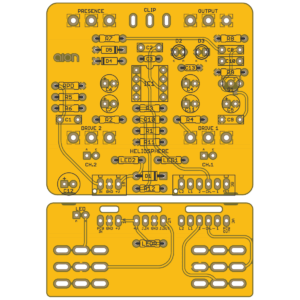 Heliosphere Dual Distortion
Heliosphere Dual Distortion
Releasing today is our version of the Stamps Drive-O-Matic, called the Heliosphere. It’s a straight adaptation of the Drive-O-Matic, with two footswitches in a 125B enclosure, but with a third diode option added so you can use the traditional RAT silicon clipping alongside the LEDs or no clipping.
In the build documentation we’ve suggested some modifications to make it a little more usable. Changing out the 10n capacitor will get you most of the way there, but you can also convert it into a straight RAT with the useful feature of switching between two gain presets.
Notes & references
- In this video, there is a demo of Rick Vito’s own pedal. At minute 2:52 you can see from his settings that he keeps the gain all the way down on both channels and only uses it as a tone sweetener rather than a drive. ↩
- We ran a circuit simulation on this and found that the Stamps placement reduces the overall signal level by around 1.5dB below the tone control cutoff frequency (around 1-1.5kHz), but has no impact on treble above these frequencies. This was likely an oversight on the designer’s part, but it does make a slight difference. ↩
